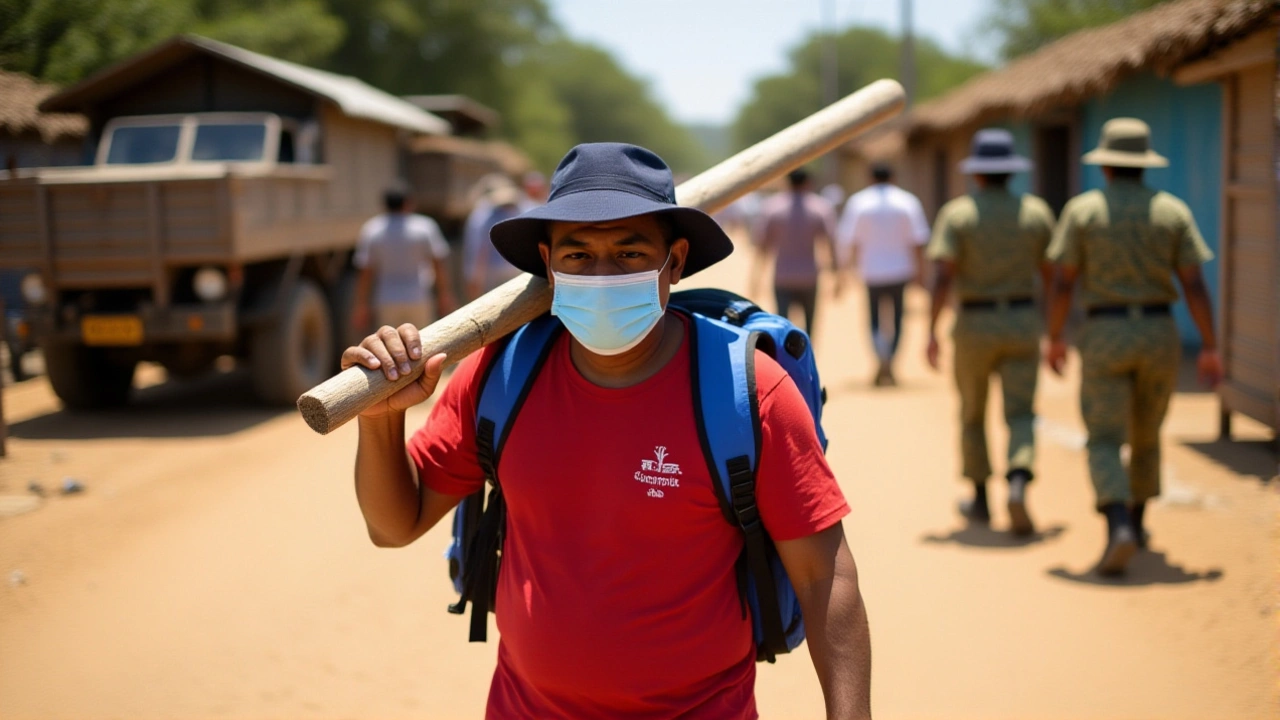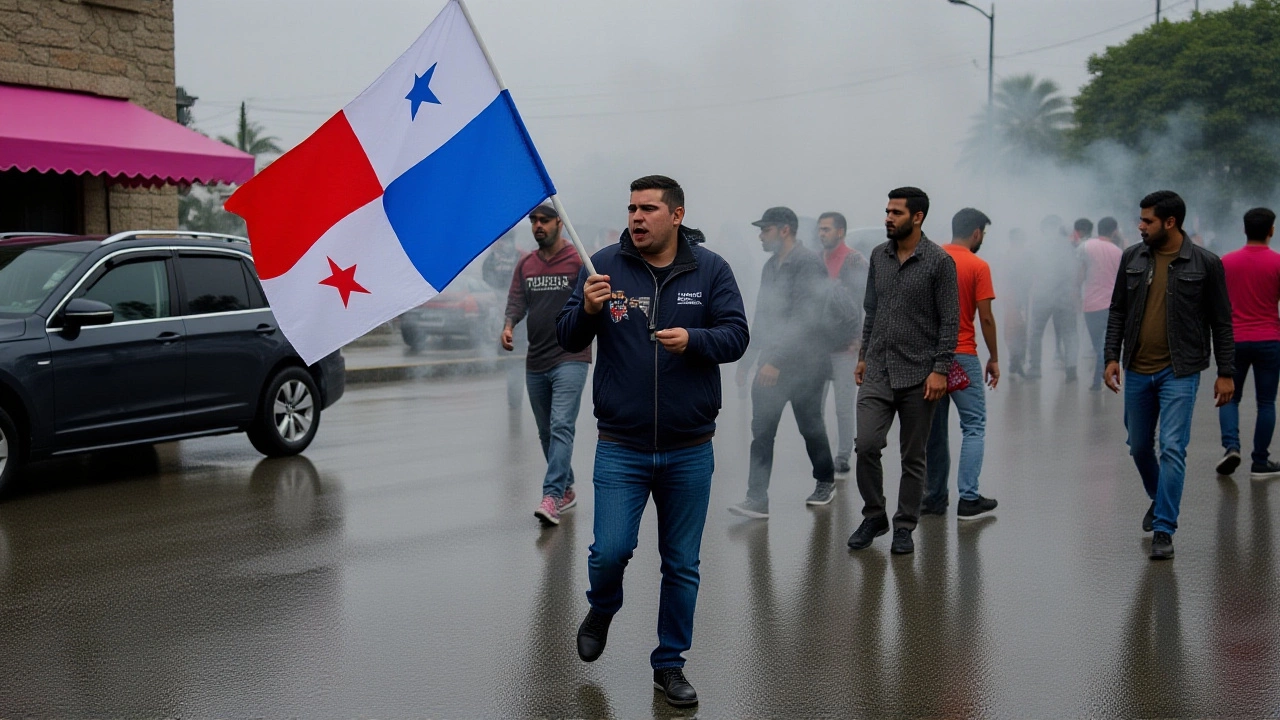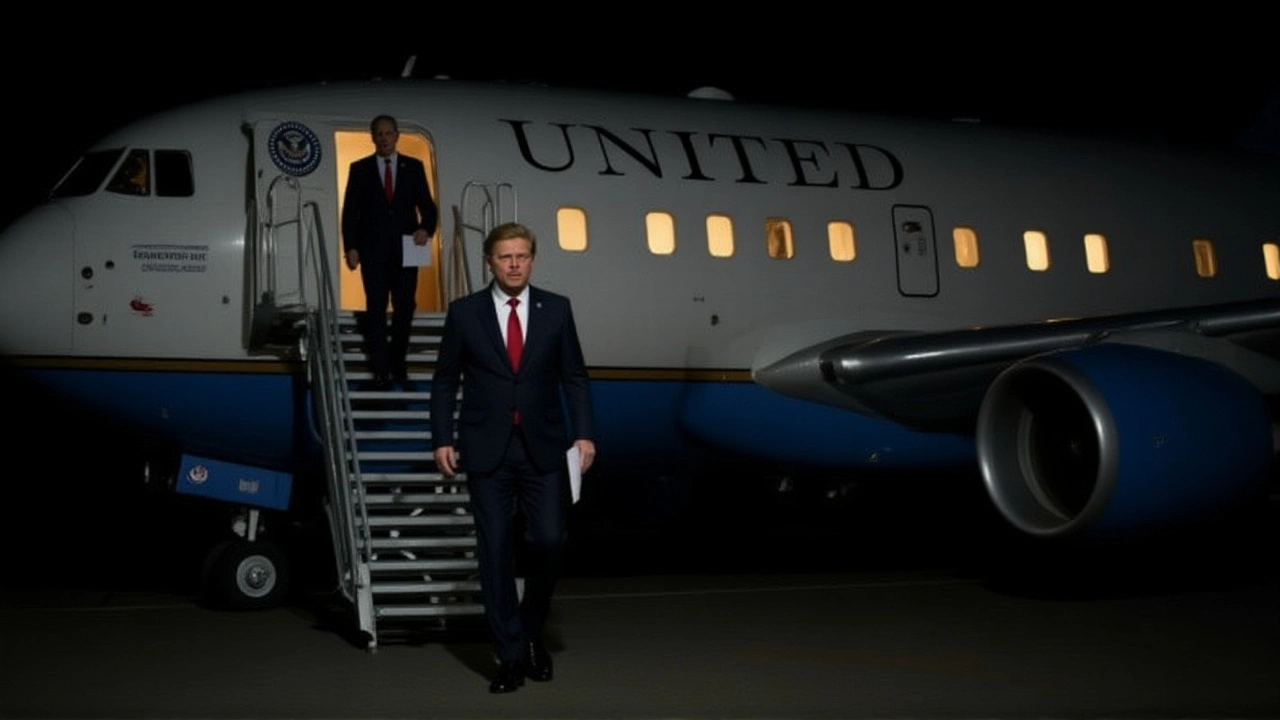When Marco Rubio stepped off the plane in Panama City on February 1, 2025, he didn’t just arrive for a photo op. He arrived with a warning — and a very specific list of demands. His first foreign trip as Secretary of State wasn’t about goodwill tours or ceremonial handshakes. It was about the Panama Canal, China, and the future of U.S. influence in the Western Hemisphere. By the time he met with President José Raúl Mulino and Foreign Minister Javier Martínez-Acha on February 2, the message was clear: the status quo is over.
The Canal Isn’t Just a Waterway — It’s a Strategic Flashpoint
Here’s the thing: the Panama Canal isn’t just a shipping lane. It’s the world’s most vital chokepoint for global trade. Nearly 6% of global maritime commerce passes through it every year — $270 billion in goods, annually. And now, according to Secretary Rubio, that flow is under indirect threat — not from war, but from contracts.
Rubio told Mulino that President Trump had made a "preliminary determination" that Chinese companies operating container terminals at both ends of the canal, building a bridge across it, and constructing a subway tunnel beneath it violate the 1977 Torrijos-Carter Treaties. Those treaties guaranteed the canal’s permanent neutrality. But Rubio argued that if Beijing ordered its firms to shut down operations during a conflict — say, over Taiwan or the South China Sea — the canal would effectively become a weapon. "If China wanted to obstruct traffic in the Panama Canal, they could," Rubio told Megyn Kelly before the trip. "I have zero doubt that they have contingency planning to do so. That’s a direct threat."
It’s a chilling thought. And it’s not theoretical. Chinese state-backed firms like China Merchants Port Holdings and China Railway Construction Corporation control the ports of Cristóbal and Balboa — the canal’s Atlantic and Pacific gateways. They also built the Atlantic Bridge and are constructing the Panama Metro Line 3 tunnel under the canal. These aren’t minor players. They’re extensions of Beijing’s Belt and Road Initiative — and they’ve expanded rapidly since Panama switched diplomatic recognition from Taiwan to China in 2017.
Panama’s Pushback: "The Canal Belongs to Panama"
But here’s the twist: President Mulino isn’t backing down. At the World Economic Forum in Davos last January, he called Trump’s suggestion of retaking the canal "impossible." And he meant it. "The Panama Canal belongs to Panama and will continue to belong to Panama," he declared. "It is not a concession or a gift from the United States."
That’s not just nationalism — it’s legal reality. The 1977 treaties transferred full sovereignty to Panama in 1999. The U.S. retains the right to defend the canal’s neutrality — but not to control it. So what’s Rubio really after? Not invasion. Not blockade. According to former U.S. Ambassador to Panama John Feeley, who spoke to WLRN on January 31, 2025, "I don’t see any reasonable possibility of military invasion. If you take those two off the table, what I do see is sanctions or tariffs."
That’s the real pressure point. The U.S. could threaten to impose tariffs on Panamanian exports, restrict access to U.S. financial markets, or block Chinese firms from using U.S. technology in canal-related projects. The threat isn’t tanks — it’s the dollar.

Migration: The Other Side of the Coin
But the canal wasn’t the only topic. In fact, it might not even be the most urgent one. In 2024, over 500,000 migrants crossed the Darién Gap — the 60-mile jungle between Colombia and Panama — on their way to the U.S. border. That’s more than double the number from 2023. And it’s not just a humanitarian crisis. It’s a political firestorm.
Rubio’s January 2025 memo to State Department staff called mass migration "among the most consequential issues of our time." And in Panama, he had good news to report: a joint repatriation program between the U.S. and Panama has already cut illegal crossings through the Darién by 37% since last October. Mulino’s government has increased patrols, detained smuggling networks, and begun deporting migrants who don’t qualify for asylum. "We thank President Mulino for his support," Rubio said, according to the State Department’s readout.
But there’s more. The two nations also agreed to designate migrant smuggling rings as "foreign terrorist organizations" under U.S. law — a move that could trigger asset freezes and international sanctions. It’s a hardline tactic, but one that aligns with Trump’s broader immigration agenda. And it’s working — for now.
What Comes Next? The Rest of the Trip
Rubio’s trip doesn’t end in Panama. He’s headed to Guatemala, El Salvador, Costa Rica, and the Dominican Republic — all key transit points for migrants and all countries with growing Chinese economic ties. In Guatemala, he’ll likely press for tighter border controls. In El Salvador, he’ll push back against President Bukele’s cozying up to Beijing. In Costa Rica, he’ll warn against allowing Chinese firms to build port expansions. And in the Dominican Republic, he’ll tout U.S. investment as an alternative to Chinese loans.
The pattern is unmistakable: the Trump administration is treating Latin America not as a region of partners, but as a strategic chessboard. Every port, every tunnel, every migrant route is a piece. And the U.S. is moving aggressively to reclaim control — not by force, but by economic leverage, diplomatic pressure, and legal threats.

Why This Matters to You
If you’ve ever bought a smartphone, a pair of sneakers, or a container of coffee, you’ve benefited from the Panama Canal. If Chinese firms suddenly slow traffic — even for a week — prices rise. Shipping delays ripple through global supply chains. Inflation ticks up. That’s not hypothetical. That’s what happened in 2021 when the Ever Given blocked the Suez Canal. Now imagine that, but in the Western Hemisphere — and with a geopolitical adversary pulling the strings.
And if the U.S. starts slapping sanctions on Panamanian businesses or restricting access to the dollar system? That hits ordinary Panamanians too — their savings, their jobs, their ability to travel. This isn’t just about sovereignty. It’s about economic survival.
Frequently Asked Questions
Can the U.S. legally take back control of the Panama Canal?
No. The 1977 Torrijos-Carter Treaties legally transferred full sovereignty of the Panama Canal to Panama in 1999. The U.S. retains only the right to defend the canal’s neutrality under the treaty’s terms. Any attempt to seize control would violate international law and trigger global condemnation. Rubio’s warning is about pressuring Panama to change how it manages Chinese contractors — not reclaiming the canal itself.
What specific Chinese companies are involved in the Panama Canal projects?
The two main Chinese firms are China Merchants Port Holdings, which operates the ports of Cristóbal and Balboa, and China Railway Construction Corporation, which built the Atlantic Bridge and is constructing the Metro Line 3 tunnel under the canal. Both are state-backed enterprises tied to Beijing’s Belt and Road Initiative. Their contracts, signed after Panama switched diplomatic recognition from Taiwan to China in 2017, have raised alarms in Washington over long-term strategic control.
How has migration through the Darién Gap changed since the U.S.-Panama repatriation program began?
Since the joint repatriation program launched in October 2024, unauthorized crossings through the Darién Gap have dropped by 37%, according to U.S. Customs and Border Protection data. Panama has increased border patrols, detained over 1,200 human smugglers, and deported more than 4,500 migrants who didn’t qualify for asylum. The program is one of the few successes in Trump’s immigration strategy — but it’s also controversial, with human rights groups criticizing forced returns.
What alternatives does Panama have to Chinese investment?
The U.S. is offering infrastructure financing through the Development Finance Corporation and private-sector partnerships, but so far, Chinese loans have been faster and less conditional. Panama’s government has explored options with South Korea, Japan, and the European Union, but none have matched China’s scale. Without U.S. financial backing — or a major shift in Chinese lending terms — Panama may have little choice but to continue relying on Beijing for large-scale projects.
What are the chances of a U.S. military response to Chinese control of the canal?
Extremely low. Former U.S. Ambassador John Feeley and multiple defense analysts agree that a military invasion or blockade would be politically catastrophic and strategically unnecessary. The U.S. doesn’t need to seize the canal — it just needs to make sure it doesn’t get shut down. Economic pressure, sanctions, and diplomatic isolation of Chinese firms are far more likely tools. Military action would risk a global economic crisis and alienate allies across Latin America.
How does this trip fit into Trump’s broader foreign policy?
This trip is the cornerstone of Trump’s "America First in the Americas" doctrine. By targeting Chinese influence and migration simultaneously, the administration is trying to reassert dominance in a region it sees as its backyard. The goal isn’t just security — it’s economic reordering. By pressuring Panama and others to choose between U.S. investment and Chinese loans, Washington is forcing a realignment. The message: if you want stability, you align with us. No more neutrality.


